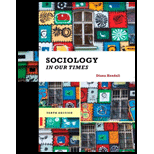
Introduction
It has become more and more common for people to praise children for each and every aspect of their life. There is debate on how much praise is the right amount and how much is too much. There is also discussion about the types of praise which may be valuable to a child verses mindless praise that encourages dependence on others because without that praise, an individual may have difficulty making judgments on their own. There has become a greater interest in giving children (and adults) encouragement over praise.
Explanation of Solution
Suggested response
Consider the different ways a child may receive praise and the possible long-term effects constant praise can have on someone over the course of their life. When a child who is always praised for any effort becomes an adult and enters college, they may discover praise comes less frequently. Consider whether the young adult navigating through college life will have developed the skills necessary to make their own judgments without the praise of other adults. On the other hand, consider how actions like encouragement can build self-esteem and confidence. There are different ways to encourage or praise someone for a job well done besides using meaningless phrases such as that. Consider the different kinds of remarks that address the actual strength behind the reason for praise. For example, if someone writes an essay that is good, instead of saying those words, a person could specify what exactly makes the essay good, such as, “the essay was thoroughly researched with a compelling argument that is well supported by evidence.”
Want to see more full solutions like this?
Chapter 3 Solutions
Sociology in Our Times
- humanized short answers- What strategies could be used to help students with hearing loss to access the curriculum? What strategies can be used to help students with hearing loss be a part of the classroom community?arrow_forwardshort simple humanized answer each- How did the field of deaf education evolve, and what is the history of the debate between oral and manual communication? How are the terms deaf and hard of hearing defined? What are some characteristics of children with hearing difficulties, and why must we consider the degree, type, and age of onset of the hearing loss? What are some causes of hearing loss? How is hearing loss detected, and why is early intervention so critical? How can varying hearing levels affect a student’s cognitive, academic, social, and language development, and what can be done to maximize a student’s communication potential? What kinds of educational responses are needed for students who are deaf and hard of hearing?arrow_forwardShould U.S. foreign policy include provisions for reducing poverty in other nations of the world? Should U.S. domestic policy include provisions for reducing poverty in the United States? How are these issues similar? How are they different?arrow_forward
- Discuss Chapter 1 of Barry Glassner’s “The Culture of Fear.” Student’s may address but are not limited to discussing how the media uses individual scenarios to falsely give a wider perception of some kind, the media’ use of exaggerations and assertions and the financing of fear.arrow_forwardTake something (physical, personal or social) and change it. Tell us, what you started out with, what it looked like after you changed it, and what you did to make the change.arrow_forwardhumanized answers and couple of sentences for each: How did the field of gifted education evolve, and why is it important for giftedness to be recognized as an exceptionality? How do we define “gifts and talents,” and how are students identified? What are some characteristics of students with gifts and talents, and how can the information processing model (IPM) help us understand their needs? Why do students from culturally and linguistically different or socioeconomically disadvantaged homes and twice exceptional student continue to be under-identified for gifted-educational supports and services? What educational responses are needed to address the strengths and challenges of students with gifts and talents? What life course considerations are important for students with gifts and talents?arrow_forward
- Explain how bilingualism, monolingualism, or trilingualism has affected you while using language in the Miami areaarrow_forwardDescribe the two models of language processingarrow_forward2. How would you compare the lives of poor people living in the low-income nations of the world with those in cities and rural areas of the United States? In what ways are their lives similar? In what ways are they different?arrow_forward
 Social Psychology (10th Edition)SociologyISBN:9780134641287Author:Elliot Aronson, Timothy D. Wilson, Robin M. Akert, Samuel R. SommersPublisher:Pearson College Div
Social Psychology (10th Edition)SociologyISBN:9780134641287Author:Elliot Aronson, Timothy D. Wilson, Robin M. Akert, Samuel R. SommersPublisher:Pearson College Div Introduction to Sociology (Eleventh Edition)SociologyISBN:9780393639407Author:Deborah Carr, Anthony Giddens, Mitchell Duneier, Richard P. AppelbaumPublisher:W. W. Norton & Company
Introduction to Sociology (Eleventh Edition)SociologyISBN:9780393639407Author:Deborah Carr, Anthony Giddens, Mitchell Duneier, Richard P. AppelbaumPublisher:W. W. Norton & Company The Basics of Social Research (MindTap Course Lis...SociologyISBN:9781305503076Author:Earl R. BabbiePublisher:Cengage Learning
The Basics of Social Research (MindTap Course Lis...SociologyISBN:9781305503076Author:Earl R. BabbiePublisher:Cengage Learning Criminalistics: An Introduction to Forensic Scien...SociologyISBN:9780134477596Author:Saferstein, RichardPublisher:PEARSON
Criminalistics: An Introduction to Forensic Scien...SociologyISBN:9780134477596Author:Saferstein, RichardPublisher:PEARSON Sociology: A Down-to-Earth Approach (13th Edition)SociologyISBN:9780134205571Author:James M. HenslinPublisher:PEARSON
Sociology: A Down-to-Earth Approach (13th Edition)SociologyISBN:9780134205571Author:James M. HenslinPublisher:PEARSON Society: The Basics (14th Edition)SociologyISBN:9780134206325Author:John J. MacionisPublisher:PEARSON
Society: The Basics (14th Edition)SociologyISBN:9780134206325Author:John J. MacionisPublisher:PEARSON





